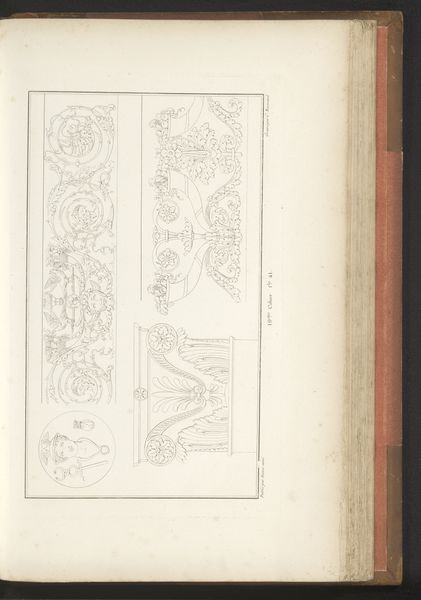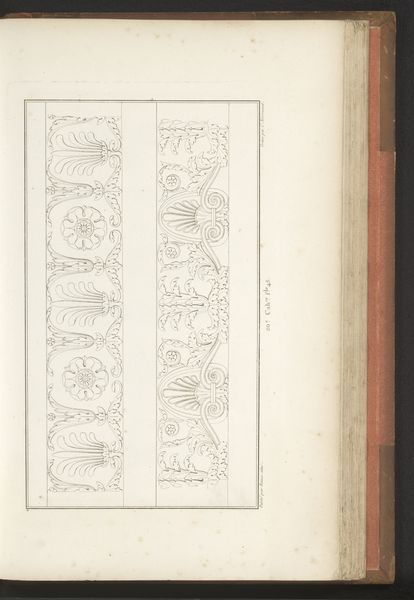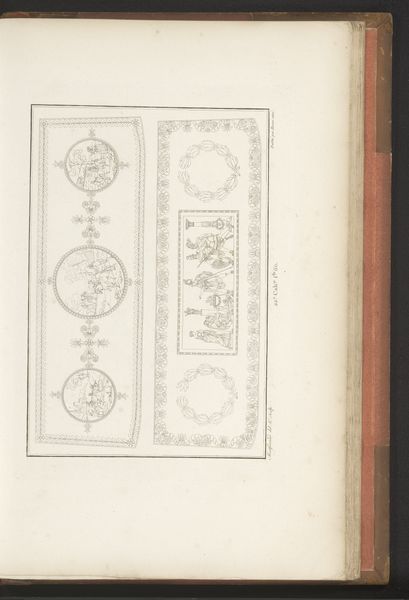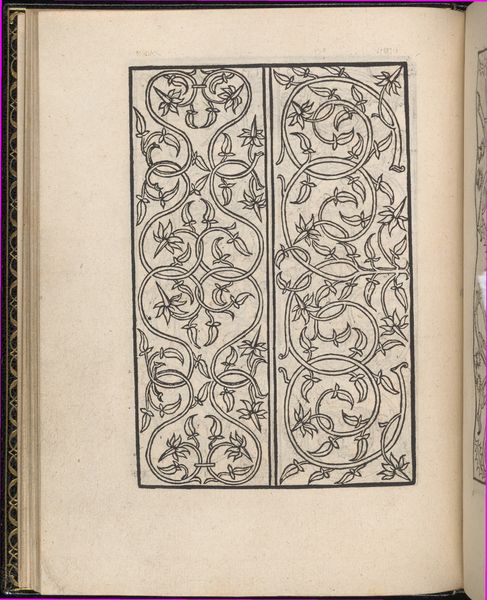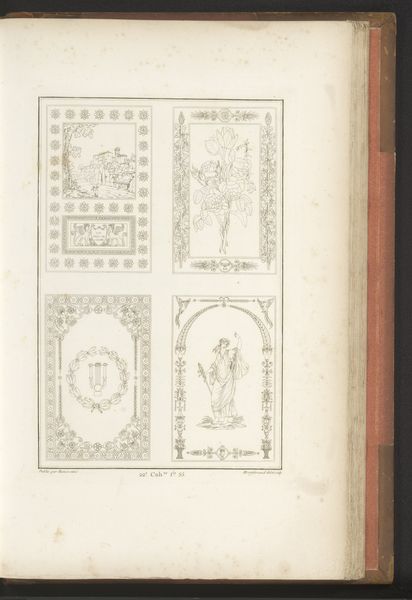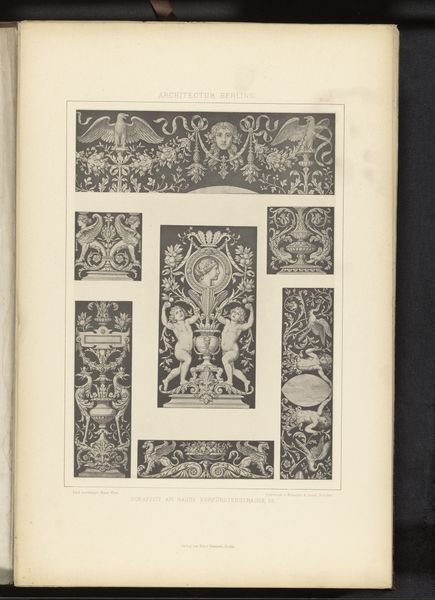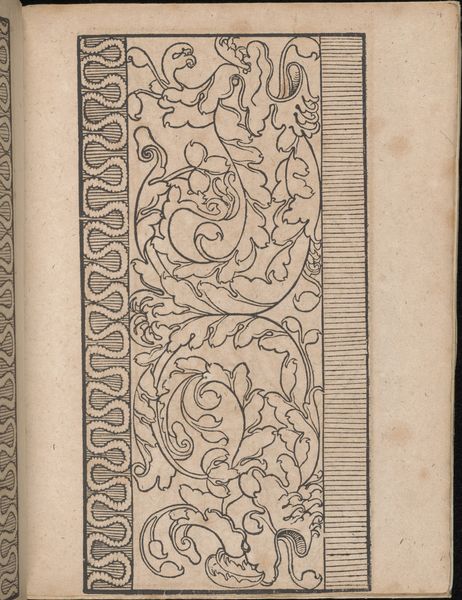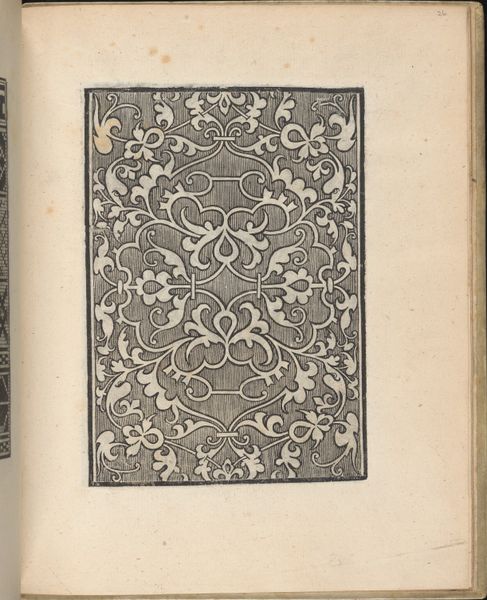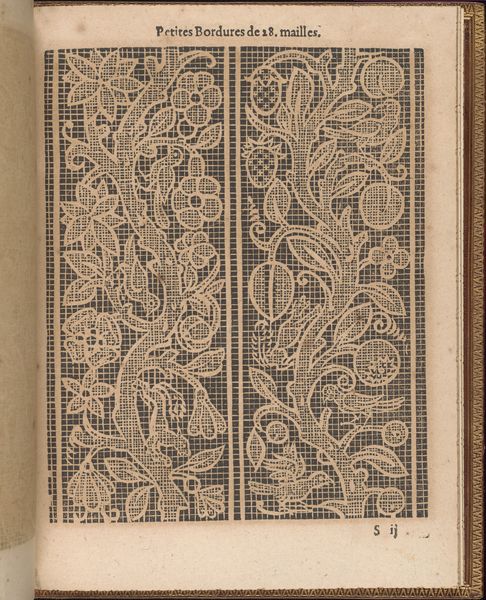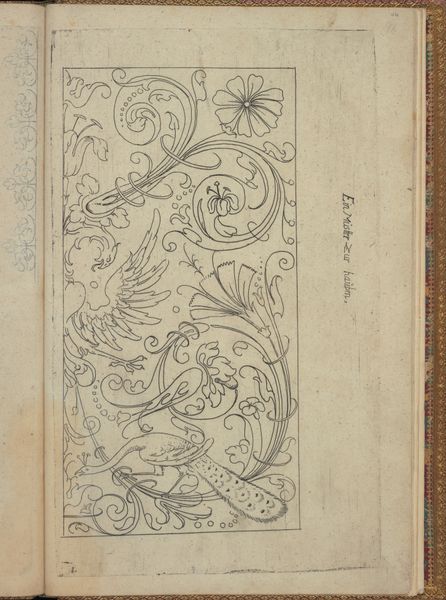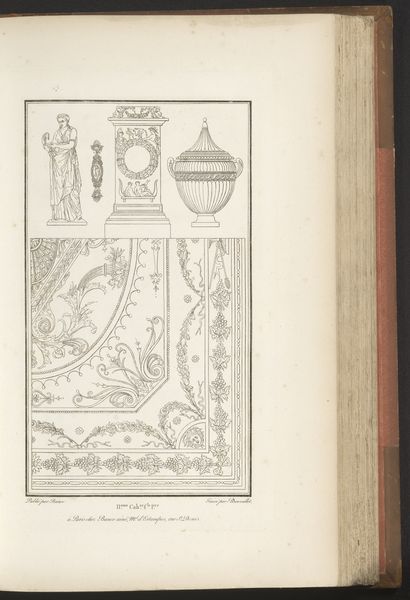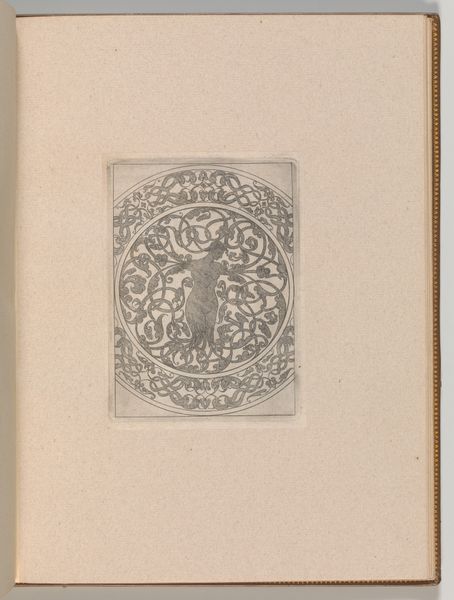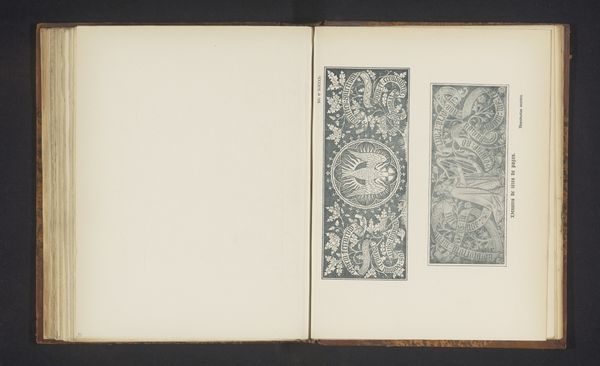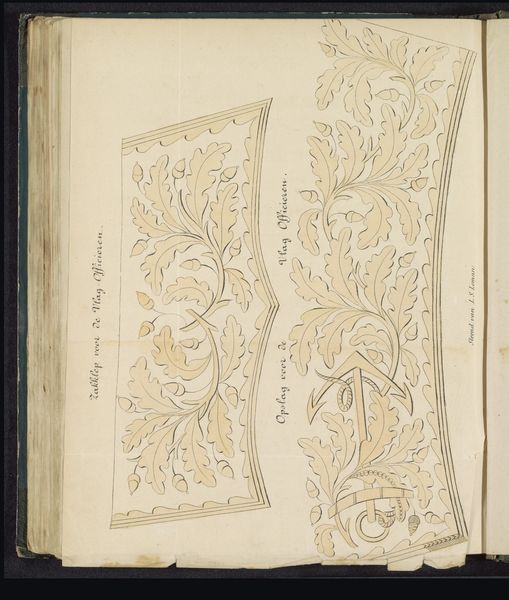
drawing, paper, ink
#
drawing
#
neoclacissism
#
classical-realism
#
paper
#
form
#
ink
#
geometric
#
line
#
decorative-art
Dimensions: height mm, width mm
Copyright: Rijks Museum: Open Domain
Editor: So, this is "Twee friezen," or "Two Friezes," an ink drawing on paper by Charles Pierre Joseph Normand, created around 1820. I’m immediately struck by the contrast between the geometric structure and the very organic, flowing leaf patterns within each panel. How do you interpret this work, particularly within the context of its time? Curator: The geometric precision you observed speaks volumes. Neoclassicism, as seen here, was a powerful aesthetic and political statement. It wasn't just about replicating ancient forms; it was about invoking the values associated with those forms: reason, order, and civic virtue, concepts highly prized after periods of revolution. Think about the decorative arts and architecture of the era. Are we just seeing beauty here? Or are we seeing a visual argument for societal structures, hierarchies, and even control? Editor: I hadn’t considered it as a political argument, more just… decorative. So, the choice of geometric structure containing organic shapes - could that represent an effort to control nature or emotions, placing them within a rigid framework? Curator: Precisely. It raises interesting questions about how the classical ideals were deployed to reinforce particular power structures. Who got to define "reason" and "order"? Whose "virtue" was being celebrated? Furthermore, how does viewing it as a "drawing" affect your understanding of "Twee friezen"? Does that challenge conventional notions of gender in fine arts in any way? Editor: I see. By questioning those definitions, we can begin to unpack potential biases or assumptions embedded within the work itself and its reception. Considering this was part of decorative art, could the restriction in free self-expression experienced by women, at the time, be somehow visible in this plate of strictly compartmentalized designs? Curator: That is interesting to think about; I wonder what other contemporary notions may have seeped into the "drawing". By engaging with the drawing's context and visual language, we're better equipped to engage with its socio-political implications. Editor: That's a completely new way to appreciate it for me, looking beyond the immediate aesthetic. Thank you! Curator: My pleasure. Now, the fun is applying that critical lens to everything!
Comments
No comments
Be the first to comment and join the conversation on the ultimate creative platform.
